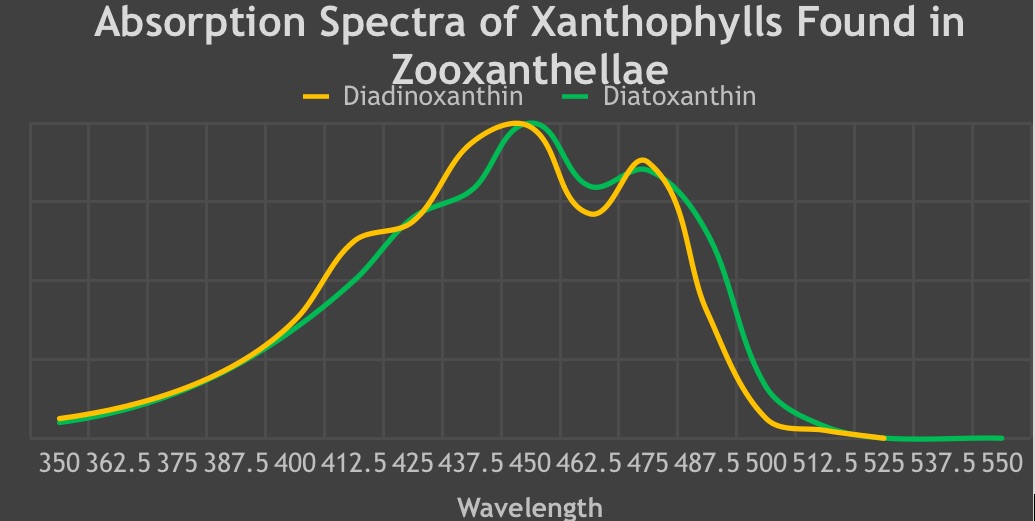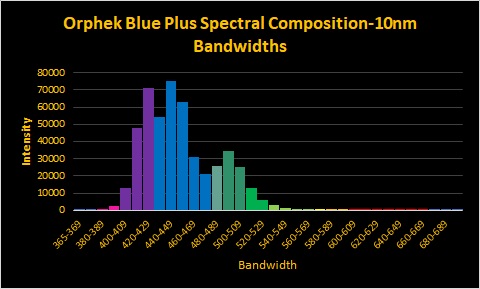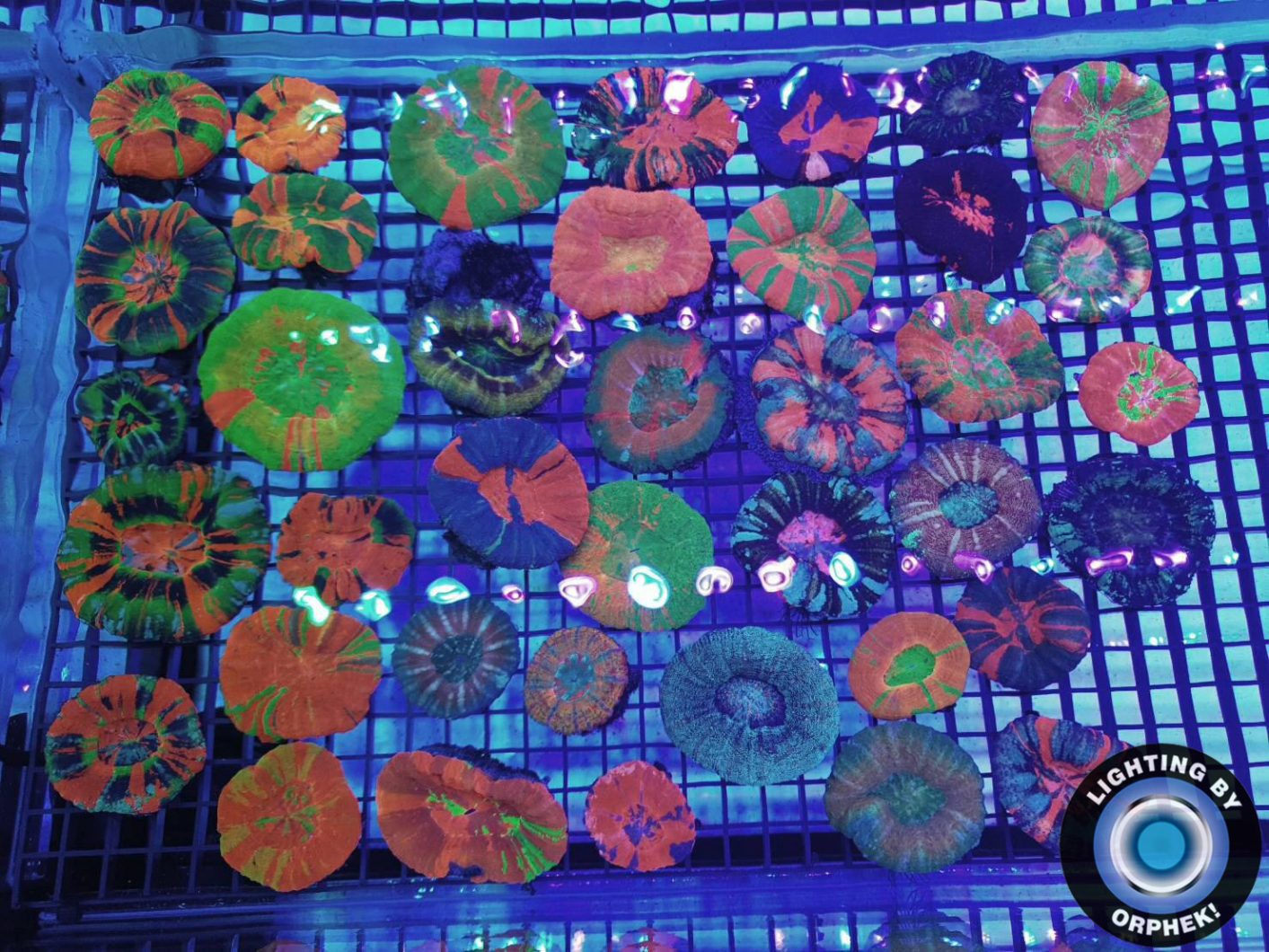By Dana Riddle – Part 11
Dana Riddle has been writing a series of articles regarding photosynthesis and the effects of variously colored Light-emitting Diodes.
If you have missed, please find here the link to PART 10 . You will find all the previous articles there if you wish to recapitulate or start following them.
A natural process exists that offers some protection to zooxanthellae when exposed to too much light – this is called the Xanthophyll Cycle.
This short article will explain what this is and how this works.
Xanthophylls (Xantho is Greek for ‘yellow’ and phyllon for ‘leaf’) are carotenoids.
These are seen during the Fall when leaves change color, but they are found in aquatic environments as well.
In Symbiodinium (zooxanthellae) there are two xanthophylls – Diadinoxanthin (DD) and Diatoxanthin (DT).
During periods of high light intensity, diadinoxanthin is converted to diatoxanthin and is called Dynamic Photoinhibition.
The conversion of DD to DT shunts energy away from the photosynthetic apparatus and acts as a ‘pressure relief valve’ for photosynthesis.
Scientists call this ‘non-photochemical quenching’ or NPQ. This process takes place in just a few minutes upon exposure to strong light.
At night, or periods of low light intensity, the process is reversed – diatoxanthin reverts to diadinoxanthin.

Understanding Dynamic Photoinhibition is important.

Read more here about: The Orphek OR2 Blue plus LED light

Unfortunately, it is not within the reef aquarium hobby and has led to the misconception that Symbiodinium photosynthesis begins to slow after a few hours’ time regardless of light intensity.
This has led to lighting regimes called ‘zig-zag’ and ‘saw tooth’ patterns. This is not to say these patterns can’t lead to success.
Based on observations I made during my 18 years in Hawaii, the DD/DT cycle begins to regulate photosynthesis in shallow water corals in early morning (generally when light intensity reaches 300 to 400 µmol·m²˖sec.)
The conversion of DD to DT offers limited protection to high light intensity.
If light intensity exceeds the abilities of xanthophylls to protect the photosynthetic apparatus, then another sort of photoinhibition occurs and is called Chronic Photoinhibition.
Long-term Chronic Photoinhibition can lead to damage of both zooxanthellae and the coral host.
Energy that could be used for growth or reproduction is then directed to tissue repair.
Next time, we’ll look at light intensities at various depths at noon in some of the clearest (or more correctly, the least turbid) ocean water in the world – the Kona coast of the Big Island of Hawaii.
In extreme cases, the coral will expel zooxanthellae in a last-ditch effort for survival.